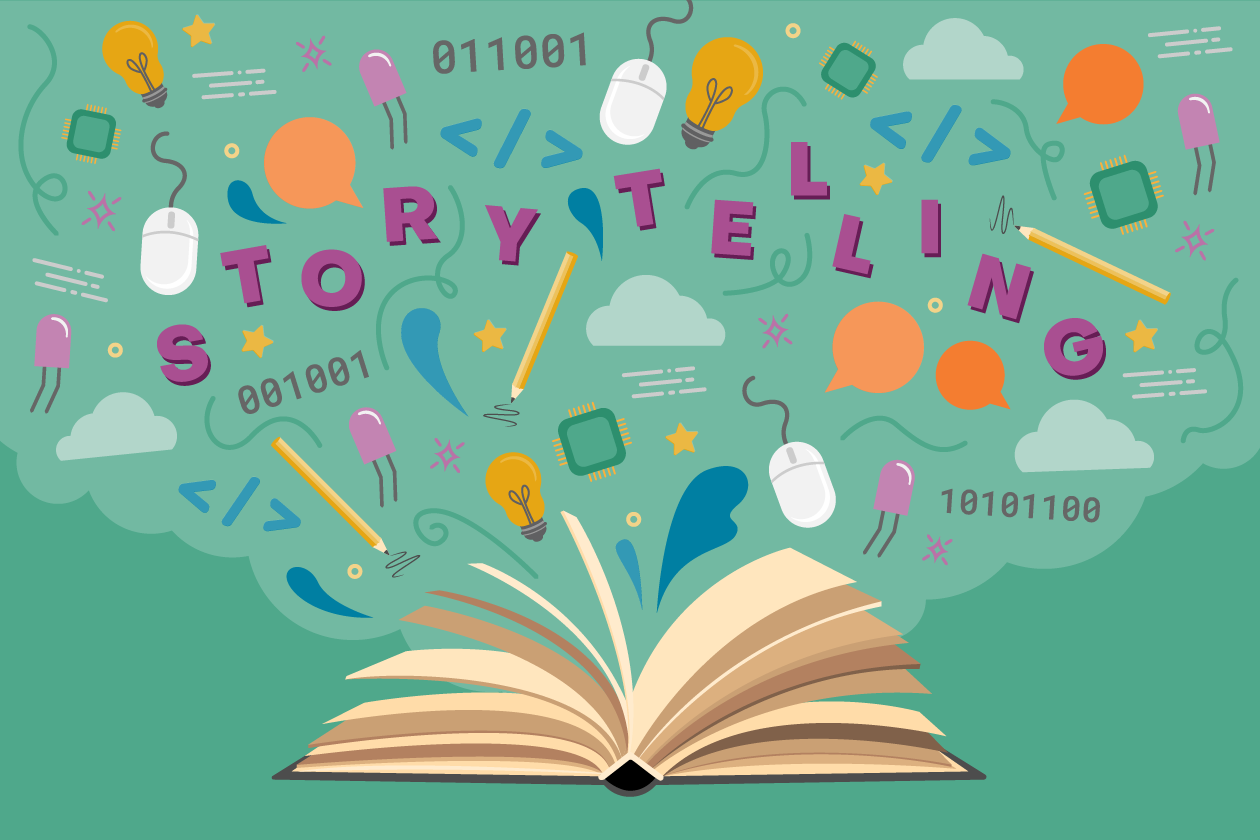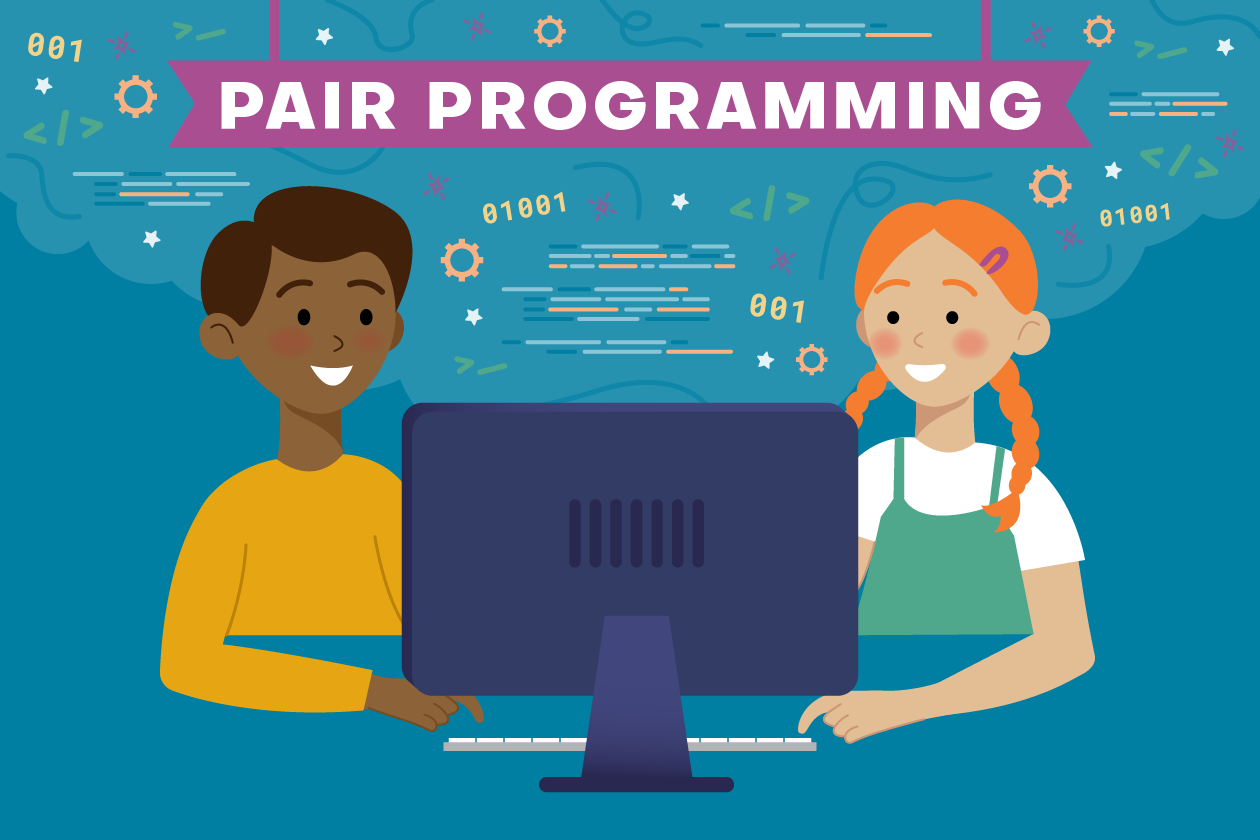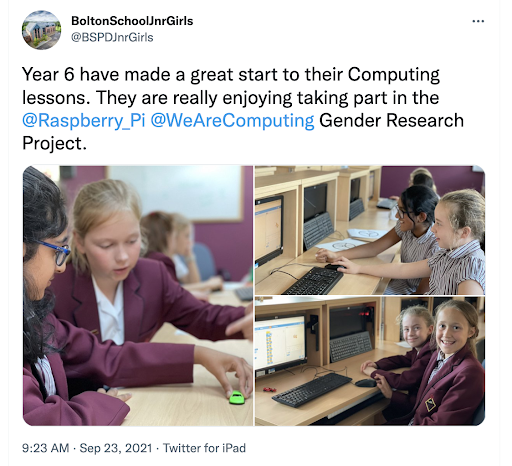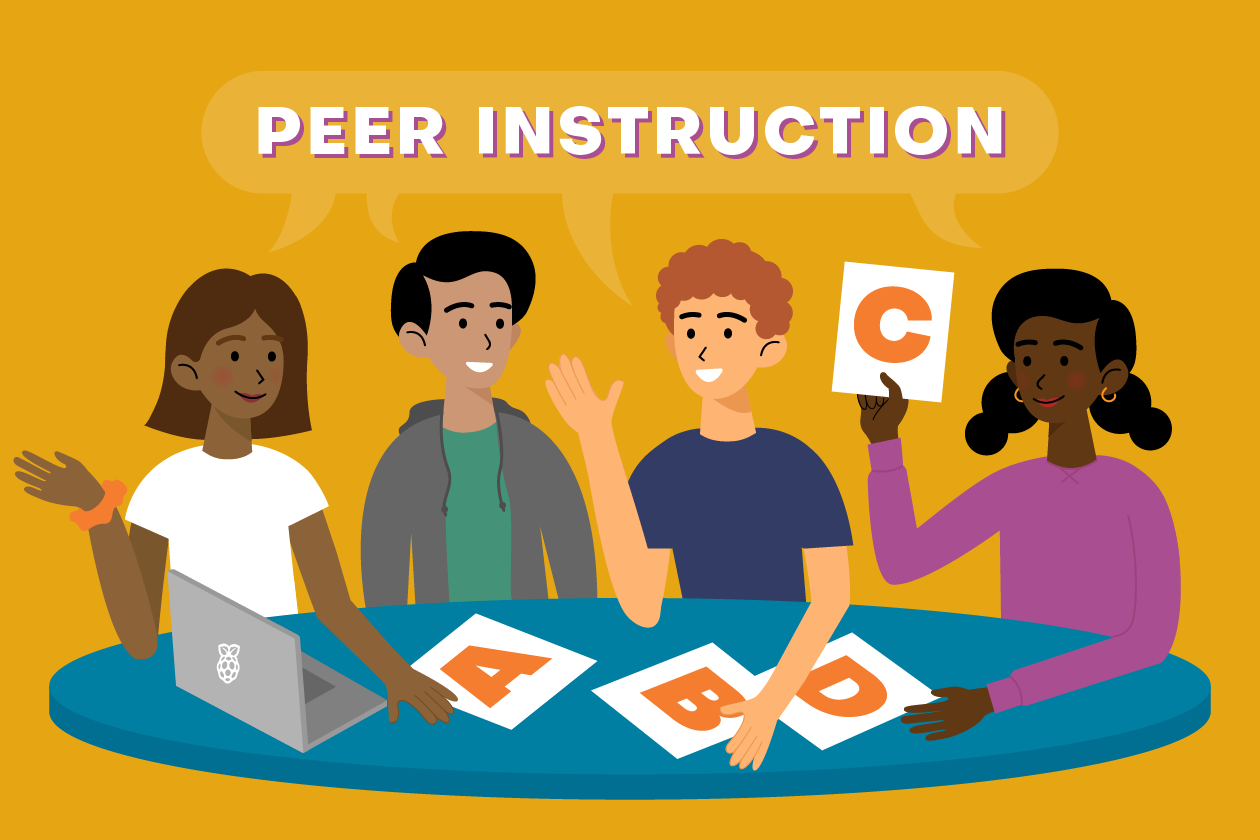Teaching approach
The Teaching Approach intervention is based on the idea that current approaches to teaching computing may not be fully inclusive and so may be less appealing to girls. This research theme is made up of three main studies, all run by the Raspberry Pi Foundation:
Key stage 1: Storytelling (pilot study)

Evidence suggests that gender stereotypes develop early, and so early intervention may be key to keeping girls engaged in computing. In this small pilot study with primary schools, we explored how storytelling and story-writing can be an effective introduction to computing for pupils in Year 2 (aged 6 to 7).
Schools delivered the intervention between April and July 2021. They followed a series of 12 lesson plans with accompanying resources. The lessons introduced computing concepts such as sequencing and repetition and linked them to elements of stories such as structure, rhyme, and speech. Pupils were introduced to ScratchJr and used this tool to tell their own stories through code.
@Fossewayacademy The children in Miss Taylor and Mrs Cotton’s class are taking part in a project using Scratch Junior. The children are loving creating stories on scratch and have learnt so much in the last 6 weeks. #genderbalanceincomputing @WeAreComputing pic.twitter.com/7WZ58INbv7
— Fosse Way Academy (@Fossewayacademy) June 21, 2021
The intervention was a randomised control trial (RCT) and was evaluated as a pilot study. Some schools were in the ‘treatment’ group and used the intervention resources, while others were in the ‘control’ group and carried on with their usual arrangements for teaching computing. The evaluation was designed to explore whether the intervention had evidence of promise, in which case it could be worthwhile to scale it up for a larger trial.
“I think [the storytelling aspect] gives them something real to work through, so it’s not… abstract… I think through the storytelling, they’re able to make it as funny or whatever they want, and it’s also their own interest. [Female pupil], she dotes on animals, so she’s always having giraffes and all of that, so it’s something that they can make their own connections too… Yes, I did really like the storytelling.”
- A Primary teacher
What we learnt
From the trial itself:
- The intervention was found to be acceptable for pupils and feasible for teachers.
- The intervention has evidence of promise.
- The independent evaluators recommended proceeding to a full trial.
From teachers’ feedback about the trial:
- Some teachers suggested that the training could be shortened.
- Less experienced teachers highlighted the need to ensure that the training introduces teachers to all of the content covered in the lessons.
- More experienced teachers suggested allowing flexibility to skip some lessons based on the existing skills and knowledge of their classes.
From the implementation of the trial:
- For future trials, the recruitment team will need to review strategies to ensure that as many schools as possible stay engaged with the trial and complete it.
- For future trials, it was recommended that more testing of the surveys be carried out to ensure that pupils are able to complete the surveys on their own and that teachers feel that it is feasible to administer the surveys within existing time constraints.
Read the full evaluation report.
Key stage 2: Pair Programming

Paired work is often used in primary settings to develop pupil understanding through discussion and collaborative work. In computing education, pair programming is a structured teaching approach where pupils pair up with a partner to write computer programs, and take turns to be the ‘driver’ and the ‘navigator’. Research suggests that the collaborative aspect of this teaching approach is particularly engaging for girls, and may increase girls’ persistence with problem-solving.
In the Pair Programming intervention, we worked with teachers of Year 4 (pupils aged 8 to 9) and Year 6 (pupils aged 10 to 11) in England to explore whether the use of the pair programming teaching approach in computing lessons has a positive effect on girls’ attitudes towards computing and their intention to study it in the future.
From January to March 2020, we ran a pilot study with ten primary schools. We then used teachers’ feedback from the pilot study to develop the resources for a full randomised controlled trial. The randomised controlled trial ran from September to December 2021 and involved 97 primary schools.
Schools were randomly allocated to the ‘treatment’ or ‘control’ group. Schools in the ‘treatment’ group used the pair programming training and teaching resources provided, and schools in the ‘control’ group taught their computing lessons as usual. We trained teachers in the ‘treatment’ group in the pair programming teaching approach, and provided two six-week units of work to deliver. Due to the coronavirus pandemic, we used an online course to train teachers, instead of running the training in person.
All teachers then delivered 12 weeks of computing lessons where pupils used Scratch to draw shapes and create animations. The lessons covered key stage 2 (pupils aged 7 to 11) computing concepts such as using sequence, selection, and repetition in programs, as well as digital literacy skills, such as using technology respectfully.

We used pupil surveys and teacher feedback to measure the impact of the pair programming intervention and explore emerging themes from the classroom.
“Even those who are maybe a little bit more reluctant… those who put their hands up today and said they still prefer to work independently, they are still all engaging quite clearly in that with their pair and doing it really, really well. However much they say they prefer working independently, I think they clearly showed how much they enjoy it, engage with it. And you know they’re achieving with it — so we should be doing this.”
– A Primary teacher (report, p. 40)
What we learnt
From the randomised controlled trial itself:
- There was no statistically significant evidence that the intervention had a positive impact on girls’ attitudes towards computing or their intention to study computing in the future.
- These results may have been influenced by the disruptions to the delivery of the intervention due to the ongoing coronavirus pandemic, though the effects of these disruptions cannot be measured.
From teachers’ feedback about the trial:
- Some teachers decided to omit (or move quickly through) parts of the lesson plans in order to fit the content into their timetabled slot. This time pressure may have been exacerbated by Covid-related disruptions (e.g. having to wipe down laptops before use).
- Teachers suggested that teachers who had good subject knowledge in computing might have found it easier to implement the intervention.
- Teachers found that the pair programming roles worked well with pupils and that pupils understood the responsibilities of the ‘driver’ and ‘navigator’.
- Teachers were generally happy with the quality of the resources provided for the intervention.
- Some teachers felt that the intervention led to greater collaboration amongst pupils and increased girls’ perception that computing is a collaborative subject.
From the independent evaluators’ further recommendations:
- The independent evaluators recommended building in longitudinal tracking of pupils’ GCSE subject choices in future research to assess the long-term impact of the intervention.
- The independent evaluators suggested refinements to certain elements of the intervention, such as cutting down on some of the lesson content and providing additional support to teachers less confident teaching computing. The evaluators recommended exploring conducting another round of the intervention and evaluation if these adaptations to the intervention and the measurement of GCSE subject choices can be made, and the impact potential of the intervention and ability to capture the targeted behavioural outcomes can thereby be improved.
- Despite the overall null impact findings, the independent evaluators also recommended offering the lesson resources and training to other teachers, and to share pair programming resources that can be applied to other computing lessons, as these resources received positive feedback from teachers and cover curriculum content that must be taught in all primary schools.
You can find out more about the pair programming teaching approach in this short video recorded in one of the schools that participated in the intervention.
Read the full evaluation report
Secondary: Peer Instruction

Results from previous research have indicated that structured, collaborative teaching approaches have increased girls’ engagement in STEM subjects such as physics. One such approach is peer instruction, which involves learning through discussion with classmates to answer predefined multiple choice questions (MCQs).
Find out more about the peer instruction approach in the short video below, taken from the training course used in this resource.
The research study
In this project, we worked with teachers of Year 8 pupils (aged 12 to 13) in England to explore whether the use of peer instruction in computing lessons had a positive effect on girls’ attitudes towards the subject and their intent to study it in the future.
The Gender Balance in Computing research team ran an initial pilot of the peer instruction trial from January to March 2020 with 15 secondary schools. We then ran a full randomised controlled trial from October 2021 to February 2022 in over 60 secondary schools in England.
Participating schools were randomly divided into two groups. Schools in the treatment group used the peer instruction resources and schools in the control group taught their normal computing lessons. Teachers in the treatment group delivered 12 weeks of computing lessons in data representation and Python programming.
Independent evaluators from the Behavioural Insights Team used pupil surveys to evaluate the impact of the approach, and teacher feedback and lesson observations at some schools to explore emerging themes from the data.
“I think Peer Instruction lessons are actually better than the normal lessons because you can ask other people around you to help more."
- Female pupil who took part in the peer instruction lessons (report, p. 45)
What we learned
From the randomised controlled trial:
- There was no statistically significant evidence that the intervention increased girls’ intention to study computer science at GCSE or had a positive effect on their attitudes towards computing. However, teacher and pupil feedback showed that the approach was generally engaging and inclusive.
- These results may have been influenced by the disruptions to the delivery of the intervention due to the ongoing COVID-19 pandemic, though the effects of these disruptions cannot be measured.
From the teachers’ feedback about the approach:
- Some teachers reported that the lessons took a long time to prepare. Simplified resources could help with this in the future.
- Teachers generally reported that the topic-related MCQs (multiple choice questions) were a really useful resource.
Recommendations from the independent evaluation:
- Building in longitudinal tracking of pupil GCSE subject choices in future research could help assess the long-term impact of the intervention.
- It would be useful to emphasise the importance of all five stages of the peer instruction pedagogy even more throughout the materials.
- Offering the lesson resources and training to other teachers and sharing non-topic specific peer instruction resources and banks of MCQs could be helpful to teachers. Despite the overall null impact findings, these resources received positive feedback from teachers and cover curriculum content that must be taught in all secondary schools.
- Implementing multiple strategies in parallel could help to address the barriers to girls’ engagement with computing.
Read the full evaluation report
Find out more about Gender Balance in Computing.